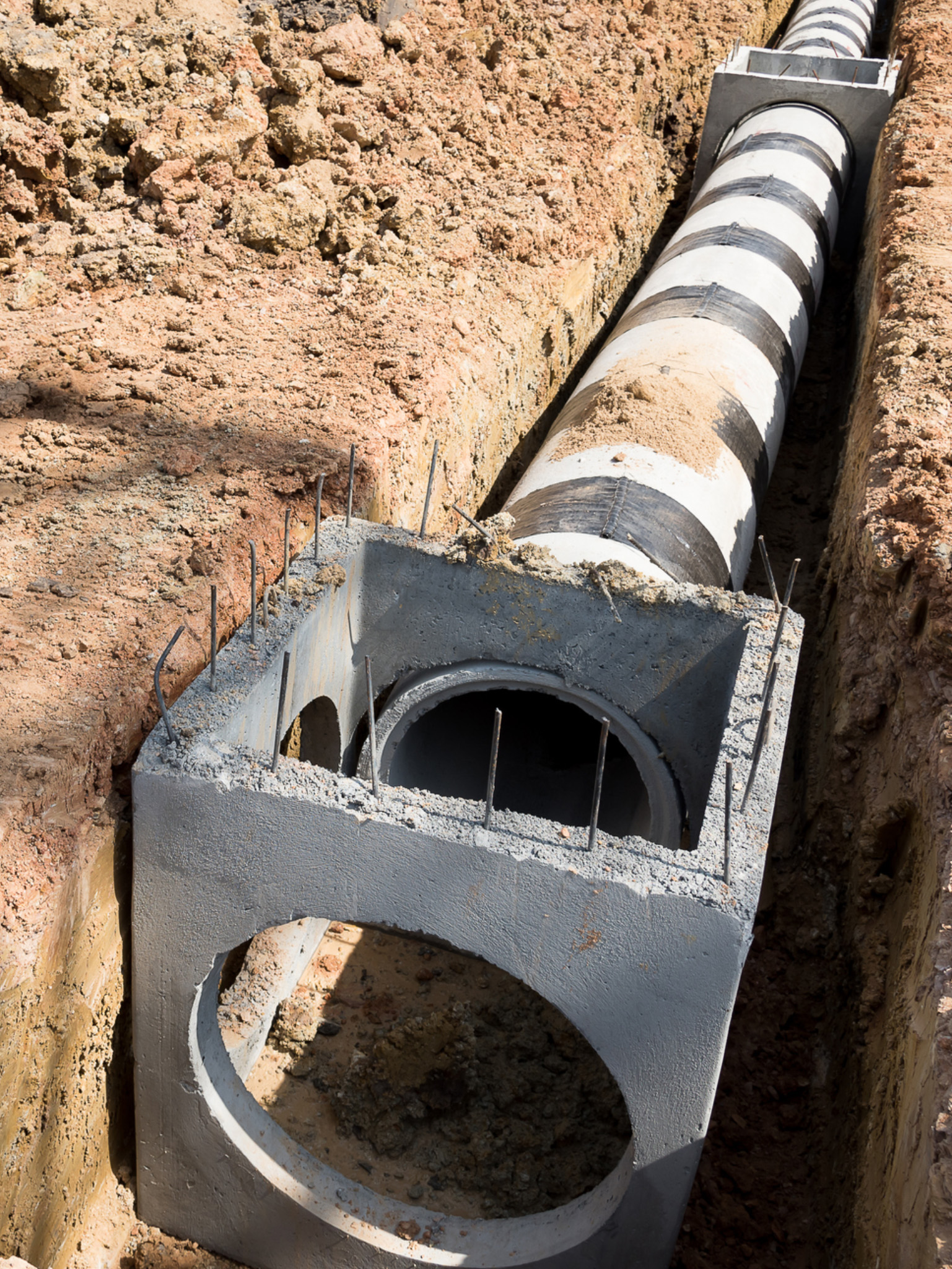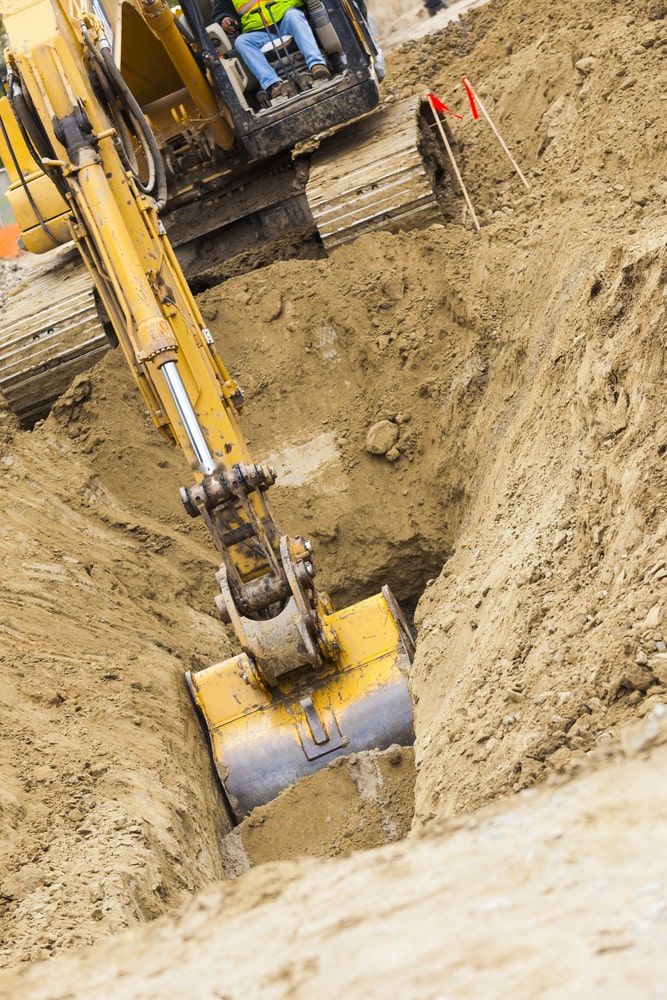Specialist Septic Ohio - Relied On Septic System Professionals in Ohio
Specialist Septic Ohio - Relied On Septic System Professionals in Ohio
Blog Article
Unveiling the Art of Excavation: Pro Tips for Safe and Productive Excavating
As soil is transformed and earth is relocated, the complexities of excavation disclose themselves, demanding a keen understanding of devices, soil structure, safety procedures, and environmental factors to consider. The experience required to browse these aspects effectively can suggest the difference in between a successful excavation project and a prospective disaster.
Relevance of Appropriate Equipment
To make certain the safety and performance of any kind of excavation job, using the suitable equipment is paramount. The right tools not only enhance efficiency but additionally minimize risks related to digging. Excavation jobs vary in scope and intricacy, ranging from tiny domestic landscape design work to massive building and construction undertakings. No matter the task dimension, having the appropriate devices can make a considerable difference in the result.
These functional devices come in various dimensions to fit different task demands. Small excavators are perfect for smaller sized jobs, while larger excavators tackle more comprehensive projects efficiently.
In addition to excavators, various other vital devices includes dump trucks, excavators, and plates. Discard trucks are necessary for removing and delivering excavated materials, while plates are used for excavating deep and slim trenches. Bulldozers succeed in tasks that need pressing large amounts of dirt or debris. By spending in the appropriate devices, excavation tasks can be completed securely, on time, and with accuracy.
Understanding Soil Make-up
A thorough grasp of dirt composition is essential for performing excavation tasks with accuracy and safety. Comprehending the various kinds of soil is essential as it straight impacts excavation methods, equipment choice, and total task efficiency.
Sand bits are the largest and supply great water drainage but offer little communication. Silt particles are smaller than sand yet larger than clay, supplying modest water drainage and communication. Clay bits are the smallest and provide high communication yet bad drain. Organic matter, such as decaying plant product, impacts soil fertility and stability.
Before commencing excavation, conducting dirt examinations to identify its composition and characteristics is vital. This information aids in picking the ideal tools, carrying out precaution, and developing excavation techniques tailored to the particular dirt problems - septic ohio. By recognizing dirt composition, excavation specialists can improve task results while guaranteeing security and adherence to finest techniques
Safety Measures and Procedures
Comprehending soil structure is the foundation whereupon safety and security actions and methods for excavation tasks are developed, guaranteeing the well-being of employees and the success of the undertaking. When it involves safety throughout excavation, there are numerous crucial procedures that need to be executed to reduce threats and stop crashes.
Most importantly, prior to any kind of excavating commences, a comprehensive assessment of the website need to be performed to recognize any kind of possible dangers such as underground utilities, unstable soil conditions, or neighboring structures that can position a danger. additional resources It is important to have a qualified individual supervise the excavation procedure to make certain that all safety protocols are followed strictly.
Additionally, all employees involved in the excavation should be appropriately educated in secure excavating techniques and the correct procedure of devices. By sticking to these security actions and methods, excavation tasks can be completed effectively and without case.
Reliable Excavation Preparation
When starting an excavation task, thorough preparation is vital to make sure performance, security, and successful outcomes. Effective excavation planning entails a number of essential steps that are crucial for the smooth implementation of the job. The initial step is to carry out a complete site analysis to determine any possible dangers, such as underground energies or unpredictable soil problems. This info is important for developing a comprehensive excavation strategy that consists of precaution and take the chance of reduction methods.
As soon as the site evaluation is full, the next action is to create a clear timeline and routine for the excavation tasks. This includes figuring out the sequence of tasks, tools requirements, and manpower allowance. Correct scheduling assists stay clear of delays and guarantees that the task remains on track.

Moreover, interaction amongst all employee is vital throughout the planning phase. Clear regulations, normal updates, and efficient sychronisation are crucial for a successful excavation task. By spending time and effort in thorough preparation, excavation teams can substantially improve efficiency, reduce risks, and attain successful outcomes.

Managing Environmental Considerations
With enhancing focus on environmental sustainability in building methods, managing ecological considerations has actually ended up being an important aspect of excavation tasks. Excavation activities have the possible to affect the surrounding setting with dirt erosion, debris overflow, environment interruption, and contamination of water sources. To minimize these risks, the original source it is necessary to implement ideal techniques that prioritize environmental security.

Moreover, appropriate waste management is important to avoid dirt and water contamination. Applying procedures for the disposal of harmful materials, recycling of waste products, and lessening using dangerous chemicals can considerably reduce the ecological impact of excavation tasks. By integrating these practices right into excavation preparation and execution, construction business can make sure that their projects are not only risk-free and effective however additionally eco accountable.
Conclusion
To conclude, understanding the art find more information of excavation calls for a detailed understanding of proper equipment, dirt make-up, safety and security procedures, and effective preparation. By complying with these standards and thinking about ecological aspects, excavations can be carried out safely and efficiently. It is critical to focus on safety and performance in every digging task to make sure successful results.
As soil is transformed and earth is relocated, the intricacies of excavation disclose themselves, demanding an eager understanding of equipment, dirt make-up, safety methods, and ecological considerations.To make certain the safety and security and performance of any excavation project, utilizing the appropriate devices is critical.A thorough understanding of dirt make-up is fundamental for executing excavation jobs with accuracy and safety. Comprehending the various types of dirt is crucial as it directly influences excavation approaches, equipment choice, and overall job performance. By recognizing soil structure, excavation specialists can enhance job end results while ensuring security and adherence to finest practices.
Report this page